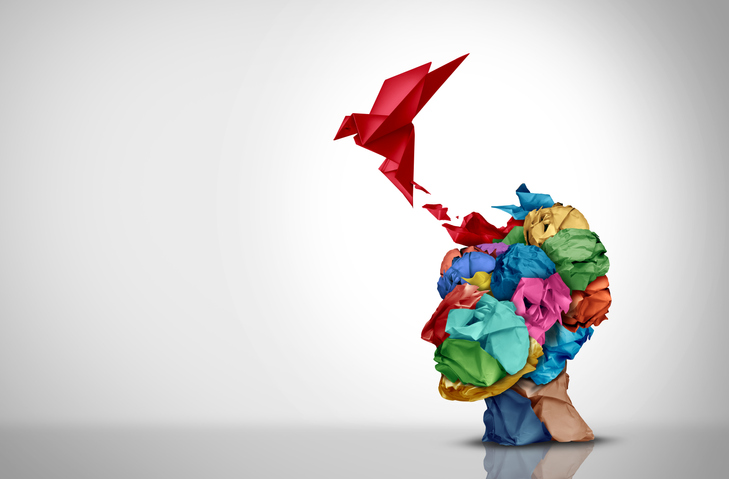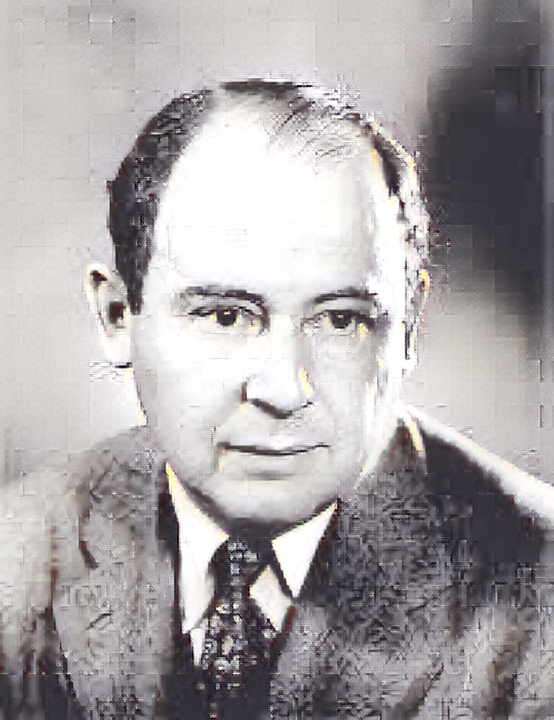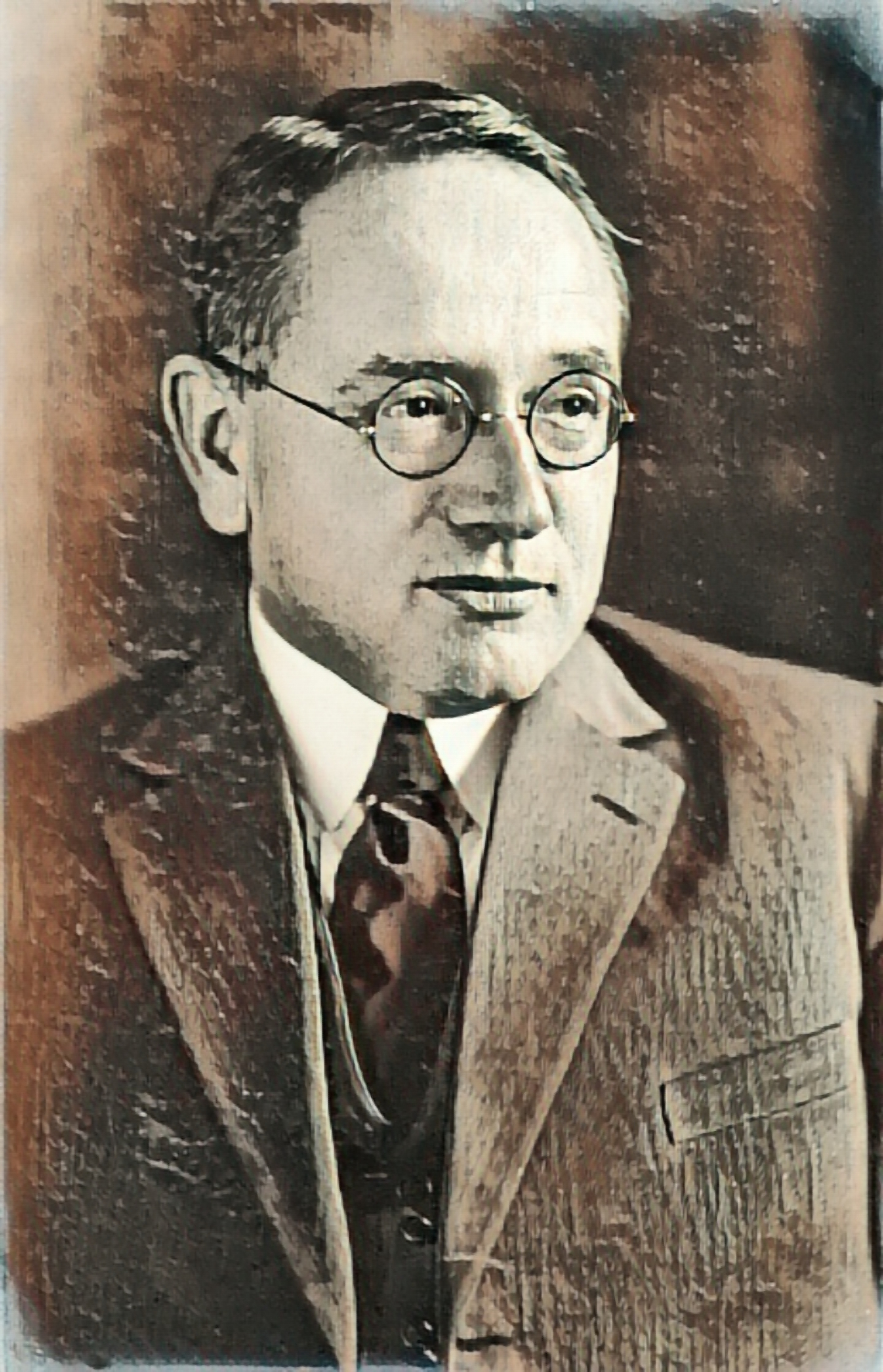Inhibited Self-Organization

Inhibited Self-Organization in the Brain-Mind takes place when the natural self-organizing faculty is interfered with in an unintelligent manner. Thereby, the brain-mind fails to function effectively and gets compromised resulting in a host of problems direct, indirect and also collateral. There are essentially four major factors contributing to it, Rote Learning, Teaching, Reward and Punishment and Off-Flow.
Leonardo: Da Vinci, I am really curious to go into this thing that you call inhibited self-organization. I presume it is essentially the opposite of stimulated self-organization?
Da Vinci: In a sense it is, Leonardo. However, only in a sense. Just as disorder is not the opposite of order, so also, inhibited self-organization is not necessarily the opposite of stimulated self-organization. The reason is, that the opposite of stimulated self-organization would rather be stimulated self-organization taken in a reverse direction, that is in a conscious manner. Inhibited self-organization, on the other hand is more of an unconscious process.
Leonardo: Ah, I get it, just as randomness and disorder are not the same…
Da Vinci: Exactly, Leonardo.
Leonardo: Da Vinci, this in fact sheds light on inhibited self-organization. Could we then say that while stimulated self-organization, like order, serves a purpose, inhibited self-organization does not do so in the sense that it fails to serve a purpose as the purpose itself is not at all clear and enlightened.
Da Vinci: That’s so, Leonardo. For lack of a clear and enlightened purpose, the self-organization is hindered. And this is worse than in the absence of any purpose at all.
Leonardo: You mean, because in the absence of a purpose, there is at least the evolutionary purpose of Nature herself that is at work. While when the purpose is not clear and enlightened, Nature is also interfered with and her nurture is hindered.
Da Vinci: Yes, Leonardo. And the factors that inhibit self-organization are in fact several. They can be termed, Rote Learning, Teaching, Reward and Punishment, Learned Helplessness and Off-Flow.
Leonardo: Da Vinci, rote learning is manifestly an inhibitor, I agree but nevertheless, I want to hear it from you as I am sure you are aware of subtleties no one has thought of before.

Da Vinci: Let’s go into rote learning, then, Leonardo. Put simply, rote learning is more or less taking in information in an unprocessed manner. In other words, it is like feeding in a data set per se into one’s brain. And unless that data is processed it does not make any sense to the brain.
Leonardo: Ah, that also explains why nowadays there is so much stress on analysing data via machine learning. Because, once machine learning is deployed effectively, the data can become meaningful information that can serve a certain purpose.
Da Vinci: Exactly, Leonardo. And in the human brain, learning serves an identical role just like machine learning does for the computer. After all, the idea behind machine learning is inspired from human learning. Coming back to rote learning, since the information is unprocessed, all that the brain can do is to store it as it is in visual or auditory forms.
Leonardo: So, since the information is stored as it is, the student can only recall it as it is but not remember it.
Da Vinci: Leonardo, that’s a crucial observation that you made. The student can only recall it and not remember it. Ah, what a capital distinction you have made.
Leonardo: Yes, Da Vinci, I realised that when information is stored in an unprocessed manner, as it is, the whole thing is like a single chunk. And this chunk can only be recalled in the visual or auditory form it was stored. And that is why this kind of stored information can never be learning. Learning is an outcome of remembering, not recalling.

Da Vinci: Yes, Leonardo, it helps to keep in mind that recalling is the way computer memory works while remembering is the way human memory works. Leonardo: I think elaborating a little more on this is helpful, Da Vinci.
Da Vinci: Yes, Leonardo, in recall as in computer memory, the stored chunks are brought into play as they are. I mean, the mutual configurations remain almost intact. In re-membering, the stored chunks are reconfigured every time the re-membering happens, in a unique manner each time. So during this reconfiguration, new, apparently imperceptible changes take place. And this is learning as opposed to mere memory retrieval. And when the imperceptible changes accumulate sufficiently, a noticeable change can also take place and this brings fresh perspectives into the learning.
Leonardo: And when the imperceptible changes accumulate to such an extent that a dramatic change can be perceived, it become research rather than learning, isn’t it?
Da Vinci: Of course, Leonardo and that’s a good way to characterise research from learning, the emergence of fresh and original insights. Leonardo: Isn’t that also the reason why putting together existing things in a completely novel manner is also said to be an act of creativity.

Da Vinci: Yes, Leonardo. Because whether this happens unconsciously in the brain or undertaken consciously, the outcome is something original and impactful. Leonardo: So since rote learning does not result in learning at all, there is neither originality nor creativity involved in it. It is rather, a sheer waste of time and effort.
Da Vinci: Except when it severs a purpose, Leonardo. Leonardo: Because when it serves a purpose, it becomes ordered?
Da Vinci: Yes, Leonardo. When it serves a purpose like stocking up memory. Leonardo: Can you elaborate this a little, Da Vinci?

Da Vinci: Well, Leonardo, in certain historical contexts and situations, this stocking up of memory has played a supremely significant role. Like in earlier eras, when the transmission of knowledge was primarily through verbal modes, it was necessary to be able to transmit it as faithfully as possible, to the very letter as it were. And there, obviously, reconfiguration of chunks was detrimental to the purpose. Though it is impossible for the human brain for absolute recall without any reconfiguration. This ensured also that the information could be preserved and handed down across generations. This is one significant role for rote learning.
Leonardo: And is there any other, Da Vinci?
Da Vinci: Quite so, Leonardo, yes, there is another equally significant one. And that is in facilitating flow or optimal experience.
Leonardo: But isn’t rote learning opposed to flow, Da Vinci?
Da Vinci: Leonardo, we must understand the role of rote learning then. Indeed, the great Hungarian polymath, Csikszentmihalyi, draws attention to this in his profound book, “Flow.” Let me quote it here as it is extremely insightful,
“But for a person who has nothing to remember, life can become severely impoverished. This possibility was completely overlooked by educational reformers early in this century, who, armed with research results, proved that “rote learning” was not an efficient way to store and acquire information. As a result of their efforts, rote learning was phased out of the schools. The reformers would have had justification, if the point of remembering was simply to solve practical problems. But if control of consciousness is judged to be at least as important as the ability to get things done, then learning complex patterns of information by heart is by no means a waste of effort. A mind with some stable content to it is much richer than one without. It is a mistake to assume that creativity and rote learning are in- compatible. Some of the most original scientists, for instance, have been known to have memorized music, poetry, or historical information extensively.”

Leonardo: This is a completely new perspective on rote learning, Da Vinci. Then, when rote learning is aligned with a purpose like facilitating the acquisition of a symbolic domain, it plays a significant role. And this means that it must be employed with understanding, care and wisdom. When thrust blindly on students it is one of the major sources of inhibited self-organization.
Da Vinci: Yes, Leonardo. When this purpose is clear and rote learning is placed in the right context, it becomes a powerful aid to learning. And the crucial term here is purpose again. When there is a clear purpose, rote learning itself can be performed in an effective manner. When inspired by a great purpose, students would have no hesitation at all to engage in rote learning in a lively manner. And in that very process of rote learning, real learning can begin to take place. Now, there takes place an interplay of memory and understanding. Rote learning and creative learning begin to go hand in hand enhancing and intensifying each other. Let me quote further from Csikszentmihalyi’s “Flow”,
“A person who can remember stories, poems, lyrics of songs, baseball statistics, chemical formulas, mathematical operations, historical dates, biblical passages, and wise quotations has many advantages over one who has not cultivated such a skill. The consciousness of such a person is independent of the order that may or may not be provided by the environment. She can always amuse herself, and find meaning in the contents of her mind. While others need external stimulation—television, reading, conversation, or drugs—to keep their minds from drifting into chaos, the person whose memory is stocked with patterns of information is autonomous and self-contained. Additionally, such a person is also a much more cherished companion, because she can share the information in her mind, and thus help bring order into the consciousness of those with whom she interacts.”
Leonardo: So, rote learning contributes to inhibited self-organization when done without a clear purpose. Da Vinci: And most often, educational systems fail in precisely this, Leonardo, in that they don’t understand the role and significance of purpose.
Leonardo: And since purpose is at the very pinnacle of reason, its lack means lack of recognition of rationality itself. Thrusting a task like rote learning on students without a purpose is to ask students to engage in a task without meaning. And no human being can function without meaning.
Da Vinci: Yes, that’s why, rote learning as practiced by educational systems is meaningless as it lacks purpose.
Leonardo: And therefore, rote learning affects students psychologically by boredom.

Da Vinci: Yes, Leonardo, psychologically by boredom and neurologically by stupor. Boredom because the challenge is so low though the skills of the student may be quite high. It induces the brain to secrete serotonin, the sleep hormone rather than endorphins, the growth hormones.
Leonardo: And emotionally by fear, Da Vinci. Because though the challenge may be low after a while it looks as if it actually becomes high since it requires a huge amount of effort to take in information as it is in an unprocessed form. This begins to cause anxiety to the student.
Da Vinci: That’s a good observation, Leonardo. So by causing fluctuations between boredom and anxiety the student is put off from flow.
Leonardo: And anxiety induces fear as the student cannot see any way to get back to flow.
Da Vinci: Actually, yes, Leonardo. For, when human beings are made to do something without rational explanation, they dread it as it is against the very spirit of Homo sapiens. And this initiates a cascade of negative hormones in the brain that begin to disintegrate the human being.

Da Vinci: You mean to ask whether they are the same, Leonardo? Since they seem to result in the same thing, the stocking up of memory? And your query is quite natural. Let me go into it a little. Well, both rote learning and memorisation may result in the stocking up of memory. However, the stocking up of memory need not happen by rote learning alone. It can happen either by passive or active means. The passive one is of course by rote learning. And the active, by engagement. When the brain engages itself in the processing of information via learning, it happens that much of the information may be absorbed by the brain unconsciously and stored up. This happens without deliberation, without any conscious effort at memorisation. And this may be called active memorisation as there is no effort involved. Whereas in rote learning often, a huge amount of effort is involved in forcing the brain-mind to store the information. Many great personalities are seen to possess this kind of memory and they have acquired it without conscious effort merely by engaging in reading or writing.

Leonardo: Ah, that means, in a sense, those teachers and educational systems who are practicing rote learning to make students memorise could in fact achieve their objective in an effortless manner if only they are sufficiently intelligent to engage students in active memorisation.
Da Vinci: Of course, Leonardo. And this is the capital distinction between the educational systems of ancient times and the present. During earlier times, memorisation was significant and important and was performed by active means. This not only resulted in a well stocked memory but also enabled students to make creative use of memory. Presently, the rote learning that is being practiced results in passive memorisation and thereby not only deadens memory but distorts, diminishes and destroys creativity.
Leonardo: Da Vinci, you called teaching as the next major inhibitor of self-organization. Can we go into it?
Da Vinci: Of course, Leonardo. Teaching is indeed a major inhibitor of self-organization. And by this I am assuming the conventional meaning without going into effective teaching that is quite rare but nevertheless practiced by truly great teachers.
Leonardo: We leave aside great teachers then as they are exceptions to the rule.
Da Vinci: So, teaching, that is conventional teaching inhibits self-organization. Let us see why and how it does so. As to why, take what teaching is in general. Teaching most often is classroom teaching and this in turn is nothing but lecturing. Now, lecturing is presenting some subject or topic in a visual and auditory manner, writing on the blackboard and talking to the students. And often, it is simply the passing on of information from some book in this manner. Most often, this does not contain any new understanding or insights from the teacher to the taught. And in the present information era, this is quite redundant as the same information is already and readily available on the internet. The only utility could then be if the teacher can curate the information so that it facilitates cognitive ease. Yes, even this could be significant as it is quite likely that the students may suffer from cognitive load when unable to sift the vast information content in the internet.
Leonardo: And Da Vinci, what about the way teaching inhibits the pace of learning of students?

Da Vinci: Yes, that’s another thing, Leonardo. Teaching that is done by lecturing forces the students to adhere to the teacher’s pace and this interferes with the brain-mind’s unique rate of processing information. This is also the reason why books as instruments of learning are more effective for the active learner, one who is already mature to a certain extent. While the audio-visual mode is effective for the student who depends more on the teacher to explain the subject matter.

Leonardo: In that sense, the audio-visual mode does not lend itself to accelerated learning?
Da Vinci: Most often no, unless the student is already in an accelerated mode of learning and can make use of the lecturing to rapidly move forward in the learning.
Leonardo: Da Vinci, how does the personality of the teacher play a role in inhibiting self-organization?
Da Vinci: Again, if the teacher is an inspiring personality, he/she can evoke self-organization in the students by example and influence. Otherwise he/she could inhibit it by an authoritarian mode of presentation.

Leonardo: That means, the teacher is inadvertently forcing the student to keep pace with his/her speed, irrespective of the fact whether the student can be much faster than the teacher!
Da Vinci: Exactly! In this case, the teacher after pacing is leading the student negatively, that is, slowing down the student's learning.
Leonardo: I remember what the great mathematician George Polya said about one of the students in his class. That student was John von Neumann, perhaps the fastest brain in mathematics!
Da Vinci: Yes, George Polya said that he felt awed by this boy in his class who gave answers before even the question was posed. He could think at such unimaginable speeds that Polya was simply baffled.
Leonardo: Though Polya was himself such a great mathematician!
Da Vinci: That speaks volumes about Polya himself and also von Neumann!
Leonardo: And I remember another incident regarding George Polya. It was at Cambridge when he was visiting Hardy and Littlewood. At that time, they were going through the great Indian mathematician Srinivasa Ramanujan's notebook. As Polya was visiting, they gave the book for him to take a look. And as the story goes, the next day Polya literally threw the book back to them. It seems Polya panicked!
Da Vinci: And for a very different reason than what one could think!
Leonardo: Yes, Polya panicked not because he found the notebook difficult, though he did find it so. He panicked because, as he himself said, Ramanujan's theorems were so bewitchingly beautiful that he was afraid! Afraid that he would end up spending the rest fo his life trying to prove them and not do anything else of his own!
Da Vinci: That simply goes on to show what a great teacher also Polya was. He could appreciate brignt young minds so much that he could nurture rather than inhibit their learning.
Leonardo: And no small wonder he wrote such magnificient books that teach mathematical thinking, learning, research and discovery.
 George Polya
George Polya
Da Vinci: The hallmark of a great teacher lies precisely in this: to be able to step out of the way of the student's learning and not inhibit the cognitive spontaneous self-organisation in the student.


